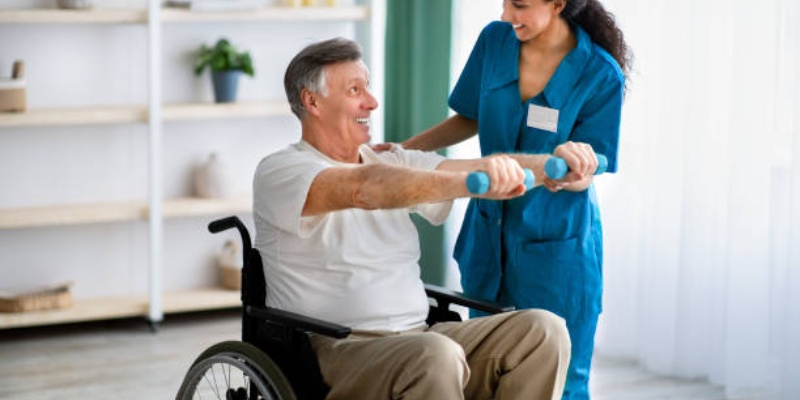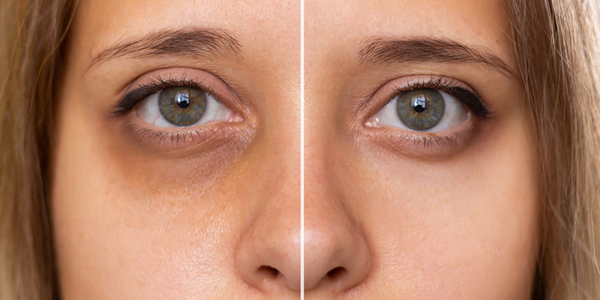Strokes may seem frightening, but here is the good news: most strokes can be prevented by modifying your daily habits just a little. Having studied health topics for years, I've found that small daily changes can add up to make a huge impact. So, let's review the simple steps you can start today to save your brain and heart.
Strokes may seem frightening, but here is the good news: most strokes can be prevented by modifying your daily habits just a little. Having studied health topics for years, I've found that small daily changes can add up to make a huge impact. So, let's review the simple steps you can start today to save your brain and heart.
1. Eat Like Your Life Depends On It (Because It Does)
What you eat on your plate is more important than you think. A diet full of fruits, vegetables, whole grains, and lean proteins can reduce your risk of stroke by as much as 80%. Begin by filling half your plate with brightly coloured veggies such as spinach, carrots, and bell peppers. These foods contain fibre, vitamins, and antioxidants that help maintain healthy blood vessels.

Trade processed snacks for a handful of nuts, seeds, or raw fruit. Nuts, specifically walnuts and almonds, contain omega-3 fatty acids that reduce inflammation in the arteries. Avoid saturated fats in fried foods and fatty meats that clog arteries and raise "bad" cholesterol levels. Instead, cook with olive or avocado, which are both heart-healthy.
Remember to drink! Having enough water helps your blood flow freely. Aim for eight glasses a day and limit sweet beverages like soda. Herbal teas or infused water (add cucumber or berries) are great alternatives.
2. Move Your Body Every Single Day
Exercise is not just for gym rats—it's an excellent way to stave off strokes. Regular exercisers lower their risk of stroke by 20% or more. Consistency is the secret. Attempt 30 minutes of moderate exercise, such as brisk walking, cycling, or dancing, five days a week.
Strength training also counts. Lifting weights, Yoga, or gardening twice weekly builds muscle and improves circulation. If you're new to exercise, start slowly. Take the stairs instead of using an elevator, pace when you're on the phone, or follow a 10-minute exercise video at home. It all adds up!
3. Pay Close Attention To Your Numbers
High blood pressure is the leading cause of strokes. It is also called the "silent killer" because it does not typically have any symptoms. Get your blood pressure checked regularly—ideally, it should be below 130/80. If it's high, collaborate with your doctor to manage it with diet, exercise, or medication.
Cholesterol and blood sugar levels also play a role. Excessive "bad" cholesterol (LDL) can clog arteries, and elevated blood sugar levels gradually damage blood vessels. Easy substitutions, such as whole grains instead of white bread or foregoing sweet desserts, can keep these numbers under control.

4. Stop Smoking (And Avoid Secondhand Smoke)
Smoking doubles your stroke risk by hurting blood vessels and increasing blood pressure. Even a single instance of smoking or vaping is risky. Stopping is tough, but the payoff is sure: one year after quitting, your stroke risk decreases dramatically.
If you're having trouble quitting, discuss nicotine patches, gum, or counselling with your doctor. Steer clear of areas where others smoke, too—secondhand smoke is as harmful as the real thing.
5. Limit Alcohol (Or Eliminate It)
Alcohol binging can increase blood pressure and lead to clotting. Opt for moderate servings: one a day for women and two a day for men. Better still, have alcohol-free nights or mocktails.
6. Stress Mastery Through Competence
Chronic Stress is not only awful—it also boosts blood pressure and inflammation, which heightens stroke risk. Relax in healthy ways. Try deep Breathing, meditation, or journaling. Even 10 minutes of quiet time daily can help.
Exercise is also a Stress reducer. Take a walk outdoors or put on a dance. And do not overlook the relief of laughter! Watch a comedy program or phone a friend who gives you joy.
7. Prioritize Sleep (Seriously)
Poor sleep is linked to high blood pressure and weight gain, both risk factors for stroke. Adults need 7-9 hours of sleep nightly. Create a bedtime routine: dim lights, avoid screens an hour before bed, and keep your room cool. If you snore or feel tired all day, ask your doctor about sleep apnea, a treatable condition linked to strokes.
8.Maintain Other Relationships Well
Loneliness is as bad for your health as smoking. Healthy relationships reduce Stress and promote good habits. Volunteer, join a club, or call loved ones regularly. Even talking to neighbours when you walk the dog makes a difference!
9. Organize Periodic Health Checkups
Do not wait for symptoms before seeing your doctor. Checkups find issues like high blood pressure or diabetes sooner. If you have had a stroke in the past, work with your healthcare providers to prevent another.

10. Know The Warning Signs
Even with prevention, knowing stroke symptoms saves lives. Remember FAST:
Face drooping
Arm weakness
Speech difficulty
Time to call emergency services
Acting quickly during a stroke minimizes brain damage. Share this information with family and friends—it could save a life.
Taking Charge Of Your Health
Lowering your stroke risk isn’t about perfection—it’s about progress. Start with one or two changes, like adding veggies to meals or walking 10 minutes daily. Over time, these habits become second nature. Your brain and heart will thank you.
Remember, you’re not alone. Millions of people have reduced their stroke risk through lifestyle changes. You’ve got this!
- Share this article:
-
![Tired Of Dark Circles And Redness? Here's How To Fix Them]() Beauty
Beauty - Tired Of Dark Circles And Redness? Here's How To Fix ThemDo you wake up each morning with dark circles under your eyes that create a tired appearance? Do you battle constant redness despite applying multiple concealers? You're not alone. Your skin issues remain visible despite all your foundation and concealer application methods. Here is the solution! Applying a colour corrector before makeup reduces skin discolourations.
-
![How To Make Your Foundation Last All Day – No Touch-Ups Needed!]() Beauty
Beauty - How To Make Your Foundation Last All Day – No Touch-Ups Needed!Does your foundation melt by midday? If you struggle with oily skin, humidity, or lack of touch-ups, it's time to try the right products and techniques. These expert tips will help keep your foundation smooth and lasting all day, regardless of skin type.








